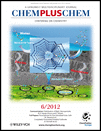
ChemPlusChem
Scope & Guideline
Connecting Researchers to Transform the Landscape of Chemistry
Introduction
Aims and Scopes
- Synthesis and Characterization of Novel Materials:
The journal publishes research on the synthesis of new chemical compounds and materials, with an emphasis on their structural and functional characterization. - Catalysis and Reaction Mechanisms:
A significant focus is placed on catalytic processes, including the development of new catalysts and the study of reaction mechanisms that enhance chemical transformations. - Environmental Chemistry and Sustainability:
Research addressing environmental challenges, such as pollution remediation and sustainable chemical processes, is a core area of interest. - Nanotechnology and Materials Science:
The journal covers advancements in nanotechnology, particularly in the design and application of nanomaterials in various fields, including energy and electronics. - Biochemistry and Chemical Biology:
There is a strong emphasis on the intersection of chemistry and biology, including studies on biomolecules, drug design, and therapeutic applications. - Computational Chemistry and Theoretical Studies:
The journal includes articles that employ computational methods to predict chemical behavior, optimize reaction pathways, and analyze molecular interactions.
Trending and Emerging
- Sustainable and Green Chemistry:
There is a marked increase in research focusing on sustainable practices, including green synthesis methods, renewable resources, and environmentally friendly chemical processes. - Electrocatalysis and Energy Storage:
The journal has seen a surge in publications related to electrocatalysis, particularly in energy storage systems such as batteries and fuel cells, reflecting a growing interest in energy-efficient technologies. - Smart Materials and Responsive Systems:
Research on materials that respond to external stimuli (e.g., temperature, pH, light) is on the rise, highlighting advancements in smart materials for applications in sensors and drug delivery. - Bioconjugation and Therapeutic Applications:
There is an emerging focus on bioconjugation techniques and their applications in drug delivery systems, diagnostic tools, and therapeutic agents, bridging chemistry and biology. - Nanostructured and Hybrid Materials:
Increasingly, studies involving hybrid materials that combine organic and inorganic components, particularly in nanostructured formats, are trending, showcasing their potential in diverse applications.
Declining or Waning
- Traditional Organic Synthesis:
There is a noticeable decrease in publications focusing solely on traditional organic synthesis methods, as researchers are increasingly adopting more innovative and efficient synthetic pathways. - Inorganic Chemistry:
Research dedicated to classical inorganic chemistry topics has waned, with fewer studies on traditional coordination complexes and metal-organic frameworks compared to previous years. - Basic Analytical Techniques:
There is a declining trend in the publication of papers that focus solely on basic analytical chemistry techniques, as the field moves towards more sophisticated and integrated approaches. - Fundamental Physical Chemistry:
Papers that primarily address fundamental aspects of physical chemistry without a clear application or connection to broader chemical problems are becoming less frequent.
Similar Journals

Chemistry-Switzerland
Fostering Collaboration in the Heart of ChemistryChemistry-Switzerland is an esteemed, fully Open Access journal published by MDPI, dedicated to advancing research in a broad spectrum of chemistry disciplines. Launched in 2019, the journal has established itself within the academic community, particularly as it spans critical areas such as inorganic and organic chemistry, as well as electrochemistry. Recognized for its contributions, it has achieved notable rankings, including Q2 status in Chemistry (miscellaneous) and Inorganic Chemistry, and Q3 standing in Electrochemistry and Organic Chemistry for 2023. With a commitment to disseminating high-quality research, Chemistry-Switzerland serves as an invaluable resource for researchers, professionals, and students aiming to share their discoveries with a global audience. Located in Basel, Switzerland, this journal facilitates seamless access to cutting-edge research, fostering innovation and collaboration within the vibrant field of chemistry. With this dynamic platform, the journal aims to continue its trajectory of growth and impact, inspiring the next generation of chemists.
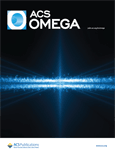
ACS Omega
Unlocking Knowledge, Fueling Innovation in Chemistry.ACS Omega is a prominent open-access journal published by the American Chemical Society that has been serving the global research community since its inception in 2016. With ISSN 2470-1343, it focuses on a wide array of topics within the realm of Chemistry and Chemical Engineering, making it a crucial platform for researchers and practitioners aiming to disseminate significant findings across these disciplines. The journal maintains an impressive standing, ranking in the Q2 quartile for both Chemical Engineering and Chemistry categories, highlighting its impact and relevance in contemporary research. Additionally, with its Scopus ranks placing it within the top 24% and 27% of General Chemistry and General Chemical Engineering respectively, ACS Omega continues to foster innovation and facilitate collaboration among scientists. As an Open Access journal, it ensures that research outputs are freely available to all, enhancing the accessibility and visibility of contributors’ work, thus playing a critical role in advancing scientific knowledge globally from its headquarters in Washington, D.C.

CHEMICAL JOURNAL OF CHINESE UNIVERSITIES-CHINESE
Advancing Chemistry Research, Bridging Ideas.CHEMICAL JOURNAL OF CHINESE UNIVERSITIES-CHINESE, published by Higher Education Press, serves as a vital platform for advancing research in the field of chemistry. With a history dating back to 1996, this journal has evolved to encompass a wide range of topics fundamental to the chemistry community, catering to both applied and theoretical perspectives. Although classified in Quartile 4 within the broader chemistry category, it remains a significant contributor to the knowledge base, ranking 281st out of 408 journals in the general chemistry category according to Scopus. Positioned in Beijing, China, the journal aims to foster collaboration among researchers and professionals while disseminating innovative research and developments. By promoting open exchange of ideas in chemistry, it strives to elevate the scholarly dialogue and contribute to ongoing education for students and professionals alike, with its content accessible through institutional subscriptions.

Journal of Siberian Federal University-Chemistry
Advancing Chemistry Through Innovative Research.Journal of Siberian Federal University-Chemistry is a peer-reviewed academic journal dedicated to advancing the field of chemistry through the dissemination of original research, review articles, and innovative studies. Published by Siberian Federal University, this journal provides a platform for scholars in the Russian Federation and beyond to showcase their work in an ever-evolving scientific landscape. With an ISSN of 1998-2836 and an E-ISSN of 2313-6049, the journal is indexed in Scopus, currently ranked in the Q4 category for both Chemical Engineering and Chemistry, highlighting its emerging presence in these fields. The journal aims to foster collaboration and knowledge exchange among researchers, professionals, and students, thus contributing to the broader goals of scientific advancement. Although the journal operates under standard access conditions, its high-quality and diverse content ensures that it remains a valuable resource for those engaged in chemical research. In an era where interdisciplinary approaches are increasingly vital, the Journal of Siberian Federal University-Chemistry plays an important role by integrating various aspects of chemistry with related fields.
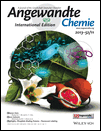
ANGEWANDTE CHEMIE-INTERNATIONAL EDITION
Shaping the Future of Chemical SciencesANGEWANDTE CHEMIE-INTERNATIONAL EDITION, published by WILEY-V C H VERLAG GMBH, stands as a leading journal in the fields of Chemistry and Catalysis, holding a prestigious position with a Q1 ranking in both categories as of 2023. With an ISSN of 1433-7851 and an E-ISSN of 1521-3773, this esteemed publication has been an invaluable resource for the global scientific community since its inception in 1962. The journal's impact is further underscored by its remarkable Scopus rankings, where it occupies the 13th place among 408 journals in General Chemistry and the 4th place among 68 in Chemical Engineering - Catalysis, marking it in the 96th and 94th percentiles, respectively. Although it does not offer Open Access, ANEWANDTE CHEMIE-INTERNATIONAL EDITION remains essential for researchers, professionals, and students seeking to stay abreast of cutting-edge developments and innovations in chemical sciences. Its comprehensive scope and rigorous peer-review process ensure that only the highest quality research finds its way to publication, contributing significantly to the advancement of chemistry worldwide.
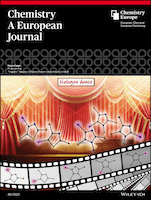
CHEMISTRY-A EUROPEAN JOURNAL
Exploring the Depths of Chemical InnovationCHEMISTRY-A EUROPEAN JOURNAL is a premier academic journal published by WILEY-V C H VERLAG GMBH, specializing in the diverse fields of chemistry and catalysis, with a distinguished focus on organic chemistry. Since its inception in 1995, the journal has established itself as an authoritative resource for researchers and professionals, currently classified in Q1 in Chemistry (miscellaneous) and Organic Chemistry, reflecting its high-quality contributions to the scientific community. With an impressive impact factor and robust Scopus rankings—#33 in Organic Chemistry and #26 in Catalysis—this journal serves as a vital platform for disseminating innovative research findings and critical advancements in chemical sciences. Although not an open-access journal, it provides valuable access options for institutions, ensuring wide reach and engagement within the scientific community. As it converges into 2024, CHEMISTRY-A EUROPEAN JOURNAL remains a key resource for anyone dedicated to advancing the frontiers of chemistry research.
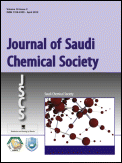
Journal of Saudi Chemical Society
Fostering Global Collaboration in Chemical Research.The Journal of Saudi Chemical Society, published by ELSEVIER, stands as a premier platform for advancing knowledge in the field of chemistry. Since its inception in 2009, this Open Access journal has garnered significant attention, securing a prestigious Q1 ranking in the Chemistry (miscellaneous) category for 2023, reflecting its position among the top journals in the discipline. With an impressive Scopus ranking of #66 out of 408 in General Chemistry, this journal boasts a commendable 83rd percentile, underscoring its impact and relevance in the global research community. The journal aims to disseminate high-quality research articles, reviews, and case studies, fostering innovation and collaboration among chemists and allied professionals. By enabling widespread access to cutting-edge research, the Journal of Saudi Chemical Society plays a crucial role in supporting the educational and professional development of students, researchers, and practitioners alike, making it an essential resource for anyone invested in the dynamic field of chemistry.
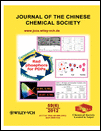
JOURNAL OF THE CHINESE CHEMICAL SOCIETY
Enriching the Global Dialogue in ChemistryJOURNAL OF THE CHINESE CHEMICAL SOCIETY, published by WILEY-V C H VERLAG GMBH, is a vital resource in the field of chemistry, focusing on a broad array of topics pertinent to general chemistry and its advancing sub-disciplines. Established in 1954 and running through 2024, this journal serves as a significant platform for the dissemination of high-quality research, showcasing innovative findings and developments within the chemical sciences. With its Q3 category ranking and positioning at Rank #203 in General Chemistry per Scopus, it reflects the journal's commitment to research excellence and impact. While not an open-access publication, it ensures accessibility to a global audience, making it an essential tool for researchers, professionals, and students alike seeking to stay informed and engaged in the evolving landscape of chemistry.

Physical Chemistry Research
Empowering global access to pioneering physical chemistry findings.Physical Chemistry Research, published by the Iranian Chemical Society, is an esteemed academic journal dedicated to advancing knowledge within the fields of *Fluid Flow and Transfer Processes*, *Physical and Theoretical Chemistry*, and *Statistical and Nonlinear Physics*. Since its inception in 2013, the journal has established a crucial platform for researchers, professionals, and students to share innovative findings and methodologies, enhancing collaboration and knowledge dissemination in the physical chemistry community. With impactful contributions recognized in Quartile 3 and Quartile 4 classifications across various categories, the journal is positioned to cultivate emerging research trends as it continues to converge through 2024. Researchers can benefit from diverse perspectives on crucial phenomena in physical chemistry, as the journal is indexed in prominent databases, further increasing accessibility and visibility. The *open access* policy ensures that cutting-edge research remains available to a broad audience, promoting the growth of the discipline globally.
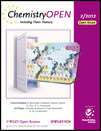
ChemistryOpen
Open Access to Groundbreaking DiscoveriesChemistryOpen is a leading open access journal published by WILEY-V C H VERLAG GMBH, dedicated to advancing the field of chemistry. With its ISSN 2191-1363, this journal has been a vital platform since its inception in 2012, promoting unrestricted access to innovative research findings and critical reviews in various chemistry domains. As a testament to its growing influence, ChemistryOpen has achieved a commendable Q2 quartile ranking in the 2023 Chemistry (miscellaneous) category, which highlights its quality and impact within the academic community. Researchers, professionals, and students benefit from the journal's commitment to making high-quality research accessible, facilitating knowledge transfer and collaborative insights among chemists worldwide. The journal's transparent open access model ensures that groundbreaking discoveries and methodologies are readily disseminated, fostering a culture of innovation and interdisciplinary dialogue in the ever-evolving landscape of chemistry.